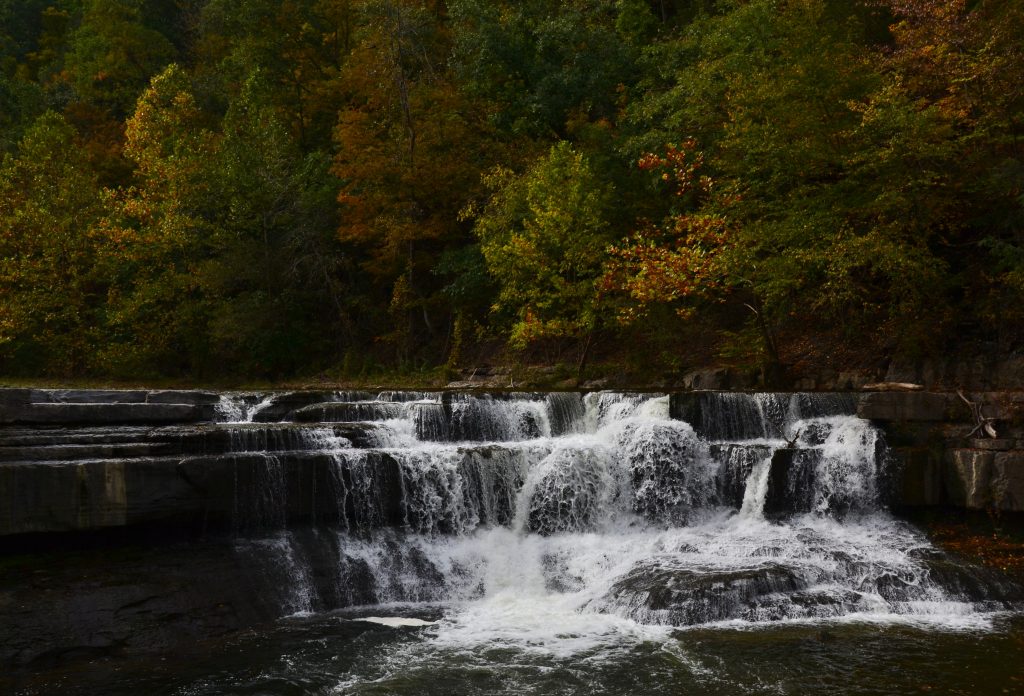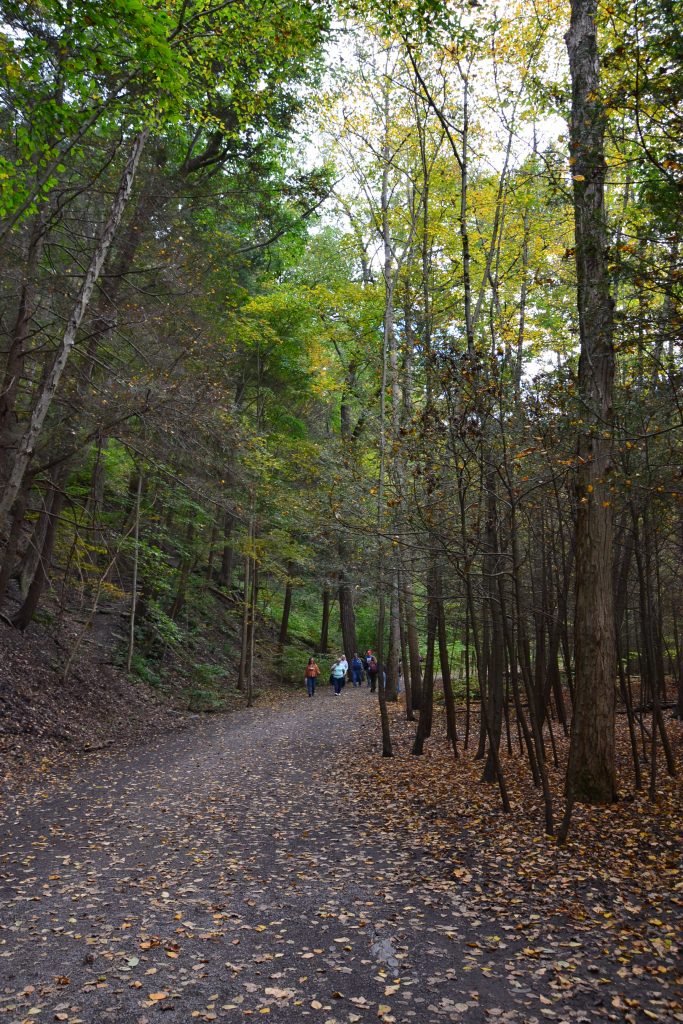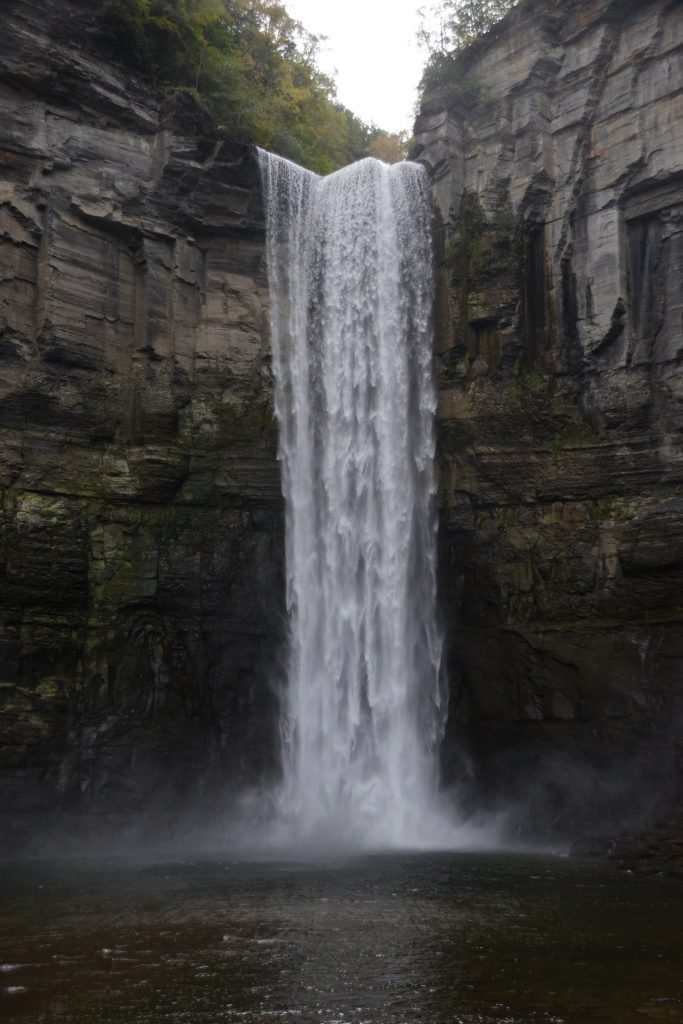By Cadence Russell
As an environmental science major, I have a deep appreciation for the outdoors, and stereotypically, I love to hike. Raised in the country west of Austin, Texas, I became quickly enamored with the geological and environmental sites around me.

Coming to college in New York changed all of that. Immediately I was seeing things that you never see in Texas, good dirt for example. The trees here are taller, more spindly. The grass is green year-round and soft to lay on, and when fall hits, the trees change color and drop their leaves. I mentioned off-handily to my friend Abigail Christopher, a freshman PA major, that I had never seen the trees change color before. By her reaction, you would have assumed I killed her cat. To her, leaf change is something to expect like clockwork; to me, it was a different world.

That’s how I found myself on my long weekend over two hours away from Daemen at a state park in the Finger Lakes. Christopher had dragged me out, along with her roommate and my friend Aysha Waddell, a freshman history and political science major, to Taughannock Falls State Park. Located on the shoreline of Cayuga Lake, just north of Ithaca, Taughannock Falls plunges 215 feet down, slowly receding away from the lake, cutting a deep gorge with cliff walls reaching up 400 feet.
To get there consisted of a just over two-hour drive of I-90, before cutting through the New York countryside, ending with a drive along the Cayuga shoreline. For a while, it’s hard to imagine such a waterfall of such size as you wind through flat cornfields and dairy farms, but as you turn towards the lake, the land gives way, dropping steeply, before winding back and forth from the water. As you come around the corner, suddenly you cross a river and there is the state park on your right. At first glance, it looks like nothing remarkable.
Yet, Taughannock Falls is the largest single-drop waterfall east of the Rocky Mountains. To get to the base of the falls, the Gorge Trail is an easy hike, following the gorge carved by the falls along a wide and well-maintained trail. The trees along the trail reach high overhead, causing a tunnel of foliage as you hike back. When you round the corner and can see the mist of the falls through the trees, you don’t expect the sheer size of the drop till you stare across from it. While we here in Buffalo may be well versed with the roar of Niagara, Taughannock is less of a wall of water and more of a spectacular drop. Standing on the bridge, staring directly at the falls, which have cut a large bowl in the shale rocks, you finally understand the true size of the falls as it towers over you.

Unlike my home state of Texas, New York has a very different geological history. Mostly everything you see in Texas can be explained through periods of shallow oceans and/or geologic uplift. New York has history, ice; Texas doesn’t. Thousands of years of the Laurentide Ice Sheet carved the valleys that now make up the Finger Lakes, revealing the valleys when the ice finally receded 10,000 years ago. Meltwater filled the depressional valleys, where glaciers left gravel and blocked streams, cutting off the region and turning the water-filled valleys into lakes. Taughannock Falls formed at that same time at the shore of Cayuga Lake and has been cutting through soft shale, forming the falls and gorge we see today.
And viewing Taughannock Falls doesn’t require hiking boots and months of preparation. The 0.75 mi Gorge Trail is relatively flat and wide, accessible to everyone, though it can get muddy. This trail will take you directly to the base of the waterfall, and is by far the most popular hike. For longer hikes, you can take the North Rim Trail (1.5 mi) or the South Rim Trail (1.2 mi), which can be connected to form a loop. These trails will give you an overlook of the falls, though they are closed in the winter months.
Located across from the state park is a recreation area, with picnic tables right on the shoreline. Before heading out on our short hike, we had a small picnic in the breeze of Cayuga. For students, it’s a great place to sit down and rest, with plenty of green space for picnic blankets. There’s also a playground (though it was under construction when we visited), and swings, perfect for younger children and families. Entrance fees were $5 per car, making Taughannock Falls more affordable for the average family, or poor college student.
Taughannock Falls State Park may be a good distance away, but it’s absolutely worth it. With an easy hike to the base of the falls, it’s a good place to get out and enjoy the beauty of New York.

